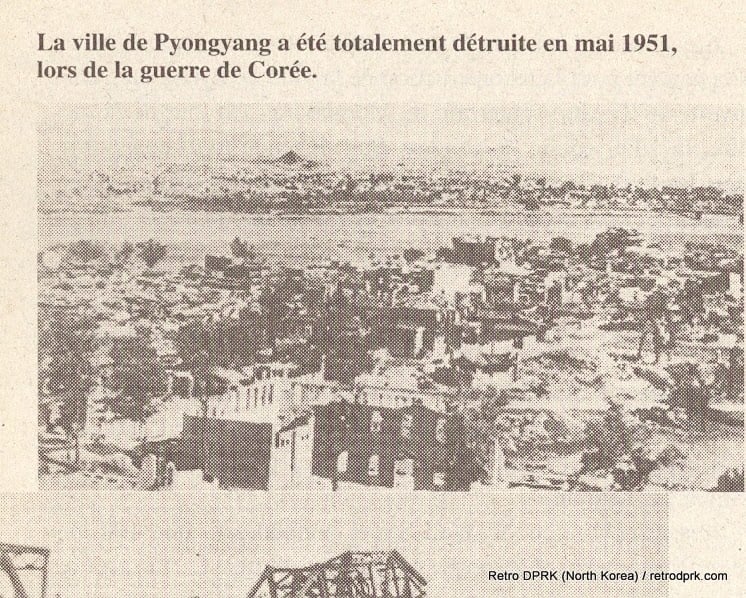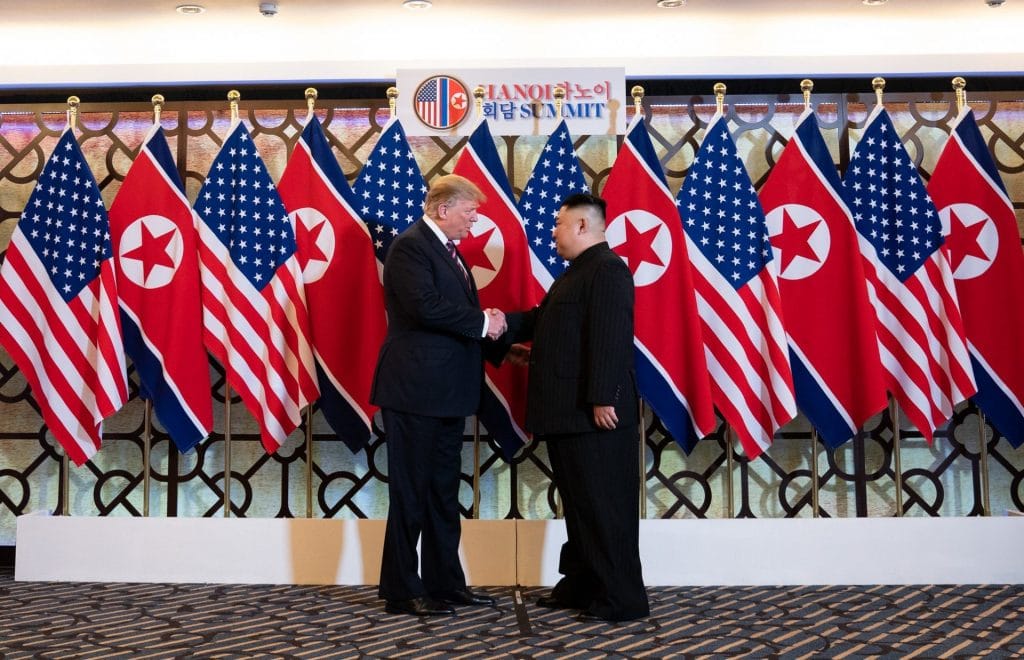U.S. War Crimes and the Political Economy of the North Korean Nuclear Crisis: Who Is Responsible? Why?
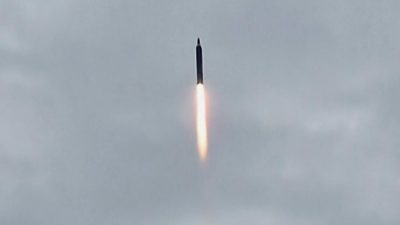
All Global Research articles can be read in 51 languages by activating the Translate Website button below the author’s name.
To receive Global Research’s Daily Newsletter (selected articles), click here.
Click the share button above to email/forward this article to your friends and colleagues. Follow us on Instagram and Twitter and subscribe to our Telegram Channel. Feel free to repost and share widely Global Research articles.
***
Introduction
For the last 40 years, the media and the academics of the West have been telling us that North Korea has all the sins and none of the virtues in the world, whereas the U.S. has all the virtues and no sins in the world. That is, North Korea is a bad boy while the U.S. is a good boy.
Therefore, if the “nuclear crisis” is not resolved, it is the fault of the bad boy; if it succeeds, it results from the good deeds of the good boy.
Such a terribly simplified picture of the nuclear crisis drawn by Washington has prevented us from understanding what has been really going on between North Korea and the U.S.
I have been watching the West’s dichotomous version of the nuclear crisis of North Korea and I have come to the conclusion that we must find the real picture of the crisis outside the analytical frame of the West’s media an academic writings.
We all know that the story of North Korean nuclear crisis is terribly complex, complicated and confusing. This is so because the lawmakers and policymakers involved in the crisis hide truth or manufacture stories in order to promote the interests of their countries or their own personal interests. This is so particularly in the case of the strong countries which can dictate media information.
The story of the nuclear crisis is the story of the unipolar world in which Washington tries to manipulate the regional security dynamics of East Asia. It is a story of how the Pro-Japan conservative South Korea (PJCSK), Japan and the U.S. China and Russia have been trying to define their North Korea policy in function of their national interests.
It is especially the story of the tiny country known as Democratic People’s Republic of Korea (DPRK) which has been struggling to survive with dignity and pride and advance in a hostile geopolitical situation.
The 75-year history of North Korea is the story of how the North Korean people have dealt with America’s persistent nuclear threat, multinational merciless economic sanctions, the West’s policy of perpetual diplomatic alienation and blind ideological attacks.
To write these stories, I need to write several books, which I cannot. What I am trying to do is to write a short article focussing on the drama from a Korean perspective of the so-called, “nuclear crisis.”
I am fully aware that many countries have been involved directly or indirectly in the dynamics of the nuclear crisis. But in this paper, I am limiting my thoughts to the bilateral nuclear relations between Pyongyang and Washington.
To be more precise, this paper asks the following questions:
-
What is the origin of the North Korean nuclear crisis?
-
How has the North Korean nuclear crisis evolved?
-
Which country is responsible for the North Korean nuclear crisis?
- What are the real objectives of America’s policy on the North Korean nuclear crisis?
- What will happen to the North Korean nuclear crisis?
1. What is the Origin of the North Korean nuclear crisis?
U.S. War Crimes against the People of North Korea
The origin of the North Korean nuclear crisis is the mutual hate and mistrust between the country of Juche and the country of Uncle Sam.
For North Korea, the U.S. is a hateful enemy. For America, North Korea is hateful but a useful enemy.
North Koreans have reasons to dislike and even hate the U.S. government. They were crucified by the Americans during the Korean War and they have been demonized.
During the Korean War, North Korea lost more than 20% of its population due to US napalm bombing and the use of chemical and biological weapons. Its women were raped en masse on the streets by GIs.
Every single standing structure was destroyed by American planes and canons.
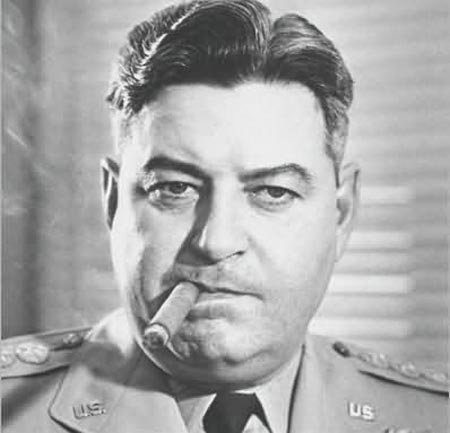 General Curtis LeMay who coordinated the bombing raids against North Korea during the Korean War (1950-53) candidly acknowledged that:
General Curtis LeMay who coordinated the bombing raids against North Korea during the Korean War (1950-53) candidly acknowledged that:
“We went over there and fought the war and eventually burned down every town in North Korea anyway, someway or another, and some in South Korea too.… Over a period of three years or so, we killed off — what — twenty percent of the population of Korea as direct casualties of war, or from starvation and exposure?” Strategic Air Warfare: An Interview with Generals (1988)
The criminal bombings of Pyongyang in 1951 ordered by president Truman, were acknowledged by General Douglas MacArthur who was commander of allied forces in Korea:
“A defiant Douglas MacArthur appeared before Congress and spoke of human suffering so horrifying that his parting glimpse of it caused him to vomit.
“I have never seen such devastation,” the general told members of the Senate Armed Services and Foreign Relations committees. At that time, in May 1951, the Korean War was less than a year old. Casualties, he estimated, were already north of 1 million.
“I have seen, I guess, as much blood and disaster as any living man,” he added, “and it just curdled my stomach.” (quoted by the Washington Post, August 10, 2017)
Video: The Criminal Bombing of North Korea
The Country of Juche
The country of Juche has been the most demonized by Americans on the basis of lies or intentionally fabricated information. One thing we have to know is the fact that most of the published information on North Korea come from North Koreans who left their country for personal reasons including crimes committed.
In many cases, these people are forced by anti-Pyongyang Intelligence services to fabricate stories. Moreover, in many cases, these defectors are generously paid for lies.
The country of Juche doctrine is blamed for not believing in God. But North Koreans believe in their gods which can be different depending upon the believer. However, religion should not be used for political interests.
It is accused for having concentration camps torturing 100,000 prisoners. Nobody knows where such information came from. However, in the 1950s and 1960s, there was a scale purge for re-education of those who were against the Juche regime.
North Korea is suspected for executing people on the street. It is possible that it happened. In one case, the person was executed because of treason. But it should not happen. Even in developed countries, the police kill people on the street because of skin colour. Is it not the case of street execution?
The North Korean leaders are labelled as merciless dictators. They may be dictators like most political leaders in the world. Remember this. The dictatorship may come from the money, the power and the corruption.
The North Korean government is accused for making its people suffer from hunger. This accusation is partly true. The hunger comes from various sources including the will of Mother Nature, bad economic policy and, especially, economic sanctions imposed by Washington and the UN.
North Korean political regime is ridiculed for violating human rights. This is the most regular item found in the menu of international diplomacy. But, which human rights are we talking about?
One thing we should know is that there are two principal types of human rights adopted by the UN.
One is the civic and political rights. When public authority prevents the citizen from participating in demonstrations against government policy, the public authority violates such human rights. Every country violates these human rights including the U.S. The other is the economic, social and cultural human rights. This is the right to physical survival, that is, the right to eat, to dress up and to live in decent housing.
In other words, if the government fails to provide food, clothing and housing, it violates such human rights. For this human right, it can be said that North Korea is trying its best despite economic sanctions. Does Washington respect this type of human rights with its awesome wealth?
Above all, I may add that the West led by Washington use human rights issues as an unethical diplomatic weapon. I think that it is a shame.
The recent trend is that the most popular criterion for human right abuse is whether the target country is pro-U.S. or not pro-U.S.
Above all, the country of Juche is made a global outcast for the alleged reason that North Korea threatens the regional security with its nuclear weapons. This is something difficult to digest.
Remember this. The combined GDP of South Korea, Japan and the U.S. is about USD 32,000 billion as against about USD 45 billion for North Korea. The combined annual national defence budget of the U.S., South Korea and Japan is about USD 1,000 billion against USD 10 billion for North Korea.
You tell me how such a tiny country can be threat to the region? Besides, as far as I know, North Korea has no intention to invade any country. In fact, peaceful cooperative co-existence with neighbouring countries is what Pyongyang wants.
Thus, the crucifixion and the demonization of North Korea by Americans are good reasons for which North Koreans to dislike and mistrust Americans, especially the pro-war elite group in Washington.
On the other hand, the U.S. hates North Korea for all sorts of reasons. It killed GIs; it prevented the U.S. from winning the Korean War; it has refused to become America’s vassal state.
Image: United States Navy Lockheed EC-121M Warning Star Bu. No. 135749 in pre-1969 paint scheme. (Licensed under the Public Domain)

Moreover, North Korea captured US spy ship, Pueblo, on 23 December 1968 and shot down US Air Force spy plane, EC-121M on April 15 1969. These events humiliated VIPs in Washington.
Washington wanted to make South Korea the model of democratic and rich country so that North Koreans envy South Koreans.
But to the displeasure of Americans, North Koreans have little respect for the military dictatorship and the corruption culture created by the pro-Japan conservative government. For this, the U.S. is displeased with North Korea.
Under these circumstances, North Korea and the U.S. are enemies; they dislike each other, they do not trust each other.
Moreover, ever since the armistice of 1953, the U.S. has been threatening North Korea with nuclear attacks. In fact, Washington had been deploying (since 1953) 100 nuclear war heads in South Korea until 1991.
In short, there are two factors responsible for the origin of the nuclear crisis.
The first factor is Washington’s hatred against North Korea and its decision to destroy the country of Juche even with nuclear weapons.
The second factor is Pyongyang’s hatred against and its mistrust of Washington forcing North Korea to defend itself with nuclear weapons.
Since the initiative of nuclear confrontation was taken by Washington, the U.S. is the origin of the U.S.-DPRK nuclear conflict.
2. How Has the North Korean Nuclear Crisis Evolved?
By the way, I define the nuclear crisis used in this paper. The word “crisis’ means a situation which can become “dangerous” if it is not corrected. In this paper, nuclear crisis refers to the Washington-Pyongyang nuclear confrontation even without imminent military confrontation. Therefore, the nuclear crisis in North Korea has existed ever since 1953.
My definition of nuclear crisis may be a little broader than the usual definition which relates to imminent military attack.
The evolution of the nuclear crisis has taken place in three stages:
- North Korea’s nuclear development planning
- Vicious circle of denuclearization
- Nuclear development for nuclear statehood
2.1. The stage of North Korea’s nuclear development planning: 1953-1991
This is the stage where North Korea felt obliged to prepare nuclear weapons to defend itself from the American nuclear threat.
1953: This year was the year of armistice and not the end of the Korean War. Washington’s possible hidden purpose was to maintain the state of war so that the Washington can control Korean affairs and sell weapons
1957: North Korea started to develop tactical weapons
1959: Soviet assistance for nuclear research and the establishment of the Yongbyon Nuclear Scientific Research Center
1965: North Korea obtained 2-MW light water reactor. The Soviet left North Korea
1980s: North Korea started to build 5-MW natural uranium reactor which could produce 6kg weapon-grade plutonium. Washington begun to pay attention
1985: North Korea joined the Non-Proliferation Treaty (NPT) under pressure of Washington.
1991: With the closing of the Cold War, the U.S. removed 100 nuclear warheads from South Korea, which facilitated the negotiation for denuclearization.
2.2. The stage of vicious circle of denuclearization, 1992-2016
1992: Since the U.S. removed the nuclear weapon from the Korean soil, North Korea thought of denuclearizing and promised the following:
- No nuclear weapon testing,
- No nuclear weapon production,
- No receiving of nuclear technology and
- No deployment of nuclear weapons.
1993:
- The U.S carried out the Team Spirit military exercises
- North Korea withdrew from NPT
- North Korea refused IAEA inspections
- Former U.S. President Bill Clinton planned to attack North Korea
- Former president Jimmy Carter went to North Korea and met Kim Il-sung in order to denuclearization
And, in 1993, there as a hope that Washington would not continue nuclear threat and in 1994, North Korea signed so called the Framework Agreement.
But, North Korea’s dream for denuclearization was shattered because of what I call, the vicious circle of denuclearization.
There were five steps in the vicious cycle of denuclearization in the period 1992-2016:
Step 1: International pressure for dialogue
Step 2: Denuclearization agreements
Step 3: North Korea’s implementation of the Agreement
Step 4: Washington’s claims that North Korea cheats, hides something
Step 5: North Korea stops denuclearization and resumes nuclear development programs
Vicious cycle 1: The Framework Agreement, October 21, 1994
Step 1: 1993: U.S. President Jimmy Carter persuaded President Bill Clinton to abandon his plan to attack North Korea, which led to the agreement of denuclearization after the Geneva Meeting in October, 1994.
Step 2: The Framework Agreement, October 21, 1994
North Korea agreed to
- stop plutonium enrichment program,
- stop the construction of nuclear facilities.
The U.S. agreed to
- remove sanctions,
- provide 500,000 crude oil,
- build two light water reactors for civil use.
Step 3: North Korea implemented the agreement 1994-2003
Step 4: Washington spoiled the agreement arguing that North Korea did not implement the agreement
- Clinton hoped that North Korea would collapse due to the death of President Kim Il-sung (July 8, 1994) and the collapse of the Soviet Union.
- North Korea tested a missile in 1998 (August 31); Washington argued that this was the violation of the agreement. But it was not included in the agreement
- In 2002, President George W. Bush put North Korea on “the axis of evil”
Step 5: North Korea being disappointed with Washington’s strategy resumed its nuclear development program.
Vicious Cycle 2: The September-19 Joint Statement of 2005
Here, I may say a few words about the 6-Party Talks. After the failure of the 1994 Agreement, the international community put pressure on Washington to engage dialogue with Pyongyang. Washington could do it, rather it should do it, but it did not for some reasons.
Perhaps, because, it wanted to let North Korea to continue its nuclear development program provided that it would not be a threat against the U.S. I will explain later why.
But, given the international pressure, Washington had to do something. The something was to ask China to organize the dialogue. China accepted to organize and lead the dialogue.
At first, it was 3-Party Talk: China, the U.S. and North Korea. But the U.S. invited South Korea and Japan which prevented the 3 Party Talk from succeeding.
Washington knew that Tokyo and Seoul were not in favour of denuclearization so that they could reap electoral benefits from the North-South tension. The continuation of the North-South tension resulting from North Korea’s nuclear weapon development has been one of the best allies of electoral wins of South Korea and Japan.
On its side, China invited Russia which would favour dialogue. Thus, from the beginning, the 6-party talk took place among three countries in favour of the dialogue and three other countries against the dialogue.
Thus, from the beginning, the 6-Party-Talk had little chance of success. However, owing to China’s leadership and devotion, the Talk produced three Joint Statements (Agreements), although they were all made useless by Washington.
We will see below what happened to these agreements. Now, we come back to the second vicious circle of denuclearization.
Step 1: The pressure of the 6-Party Talk members
Step 2: The September-19 Joint Statement of 2005
North Korea agreed to
- give up all current nuclear programs,
- return to NPT.
The U.S. agreed to:
- provide light water reactors to North Korea,
- not to invade North Korea and guarantee security,
- normalize relations with North Korea,
- the U.S sanctions remained.
Step 3: North Korea implemented the agreement.
Step 4: The agreement was not carried out due to U.S. behaviour
- September 25, 2005: the U.S. Treasury Department accused North Korea of money laundering with funds in the Banco Dela Asia (BDA) in Macao; the funds were frozen;
- October 21, 2005: Washington put North Korea back on the list of state sponsor countries
Step 5: North Korea
- Resumed its nuclear development program.
- North Korea conducted its first nuclear test on October 9, 2006 in order to continue the talks in a better bargaining position.
Vicious Cycle 3: The February 13 Joint Statement of 2007
Step 1: Pressure of the 6-Party Talk member
Step 2: The February-13 Joint Statement of 2007
North Korea agreed to
- shut down the nuclear facilities in Yongbyon,
- abandon nuclear program.
The U.S. agreed to
- accept the bilateral talk,
- remove North Korea from the list of state sponsor countries,
Step 3: North Korea was ready to implement the agreement.
Step 4: G.W. Bush qualified North Korea as “as brutal regime”.
Step 5: North Korea did not object and refrained from conducting nuclear development program.
Vicious Cycle 4: The October 3 Joint Statement of 2007
Step 1: Pressure by the 6-Party Talks members.
Step 2: The October-3 Joint Statement of 2007.
North Korea agreed to:
- disable the nuclear reactor,
- declare all nuclear programs,
- disable the 5-MW reactor in Yongbyon,
- declare all the nuclear development programs.
The U.S. agreed to
- increase bilateral meetings to increase mutual trust,
- remove North Korea from the list of state sponsors of terrorism,
- provide 100,000 tons heavy fuel oil,
Step 3: North Korea implemented the agreement.
Step 4: The U.S. made North Korea disappointed by Rice’s behaviour.
The U.S. Secretary of State, Condoleezza Rice, raised the issue of the verification of North Korea claims; the verification was not in the agreement.
Step 5: North Korea slowed down its denuclearization.
In April 2009, North Korea launched a satellite of communication, but Washington insisted it was ICBM.
Disappointed once again with the American attitude, North Korea left the 6-party talks for good on April 14, 2009
North Korea conducted its second nuclear test on May 25, 2009 to show its displeasure with Washington’s behaviour.
Vicious Cycle 5: Leap Day Agreement of February 29 of 2012
Step 1: International pressure for the restoration of the dialogue and the 6-Party Talk
Step 2: Leap Day Agreement February 29, 2011
North Korea agreed to
- suspend nuclear tests and long-range missile tests,
- not to undertake uranium enrichment activities,
- allow the IAEA to verify and supervise North Korean nuclear activities.
The U.S. agreed to
- stop hostility toward North Korea,
- provide 240,000 tons of nutritious foods to North Korea.
Step 3: North Korea was ready to implement the agreement
Step 4: North Korea announced that it would launch a satellite; Washington said that it violated the agreement. But the satellite launch was not in the agreement.
Step 5: Dissatisfied with Washington’s accusation, North Korea resumed its nuclear development program.
Thus, the U.S. had five chances to denuclearize North Korea. But, it has obliged North Korea to continue its nuclear development program. Why? We come back to this question later.
North Korea’s 3rd Nuclear test on February 12, 2013 was designed to show that North Korea can go further with the development of nuclear weapons.
2.3. The stage of nuclear development for nuclear statehood
 This period was characterized by the projection of two images of North Korea. One was North Korea’s pride of having become at last a bona fide nuclear state. The other image was the bold and self-confident behaviour of Chairman, Kim Jong-un as the head of a nuclear state.
This period was characterized by the projection of two images of North Korea. One was North Korea’s pride of having become at last a bona fide nuclear state. The other image was the bold and self-confident behaviour of Chairman, Kim Jong-un as the head of a nuclear state.
2016 February 7: North Korea launches a satellite with a long-range rocket
2016 March-April: The U.S. and South Korea conducted the Key Resolve joint military exercise with 300,000 South Korean soldiers and 17,000 American soldiers with carrier battle group and performed the simulation of “decapitation” meaning cutting off the head of the North Korean leader.
2016 June 6: North Korea’s 4th Nuclear Test
This test was a step closer to North Korea’s nuclear statehood. This test was a hydro bomb test and North Korea thinks that it has attained its nuclear goal to have effective deterrence against any foreign invasion.
2016 September 9: the 5th Nuclear Test
This nuclear test was intended to show to the world that North Korean nuclear technology is further progressing.
2017 January: Donald Trump becomes US president
2017 July 4: launching of ICBM Hwasong-14. This event was the most important moment in the evolution of North Korean nuclear technology. The message was that now North Korea had the capacity to carry miniaturized nuclear weapon as far the U.S. territory.

Hwasong-14 flight test, July 2017. Photo: KCNA
2017 September 3: 6th nuclear test (hydro bomb). This test took place two month after the Trump’s threat of nuclear attack against North Korea and was intended to tell Trump that North Korea is ready to defend itself.
The launching of Hwasong-14 combined with the three latest nuclear tests meant that North Korea has become a nuclear state deserving respect.
2017 November: North Korea was put back on the list of state sponsor of terrorism
2018 February 9-25: Pyongchang Winter Olympics. This event and a series of summits which took place after the Winter Olympics showed the possibility of the North-South and the U.S-DPRK dialogue and peace process was possible.
The brilliant diplomatic performance of Kim Yo-jong, now number 2 leader in North Korea, showed that, in North Korea, there were well-educated and world-class leaders. She contributed to the projection of favourable image of North Korea.
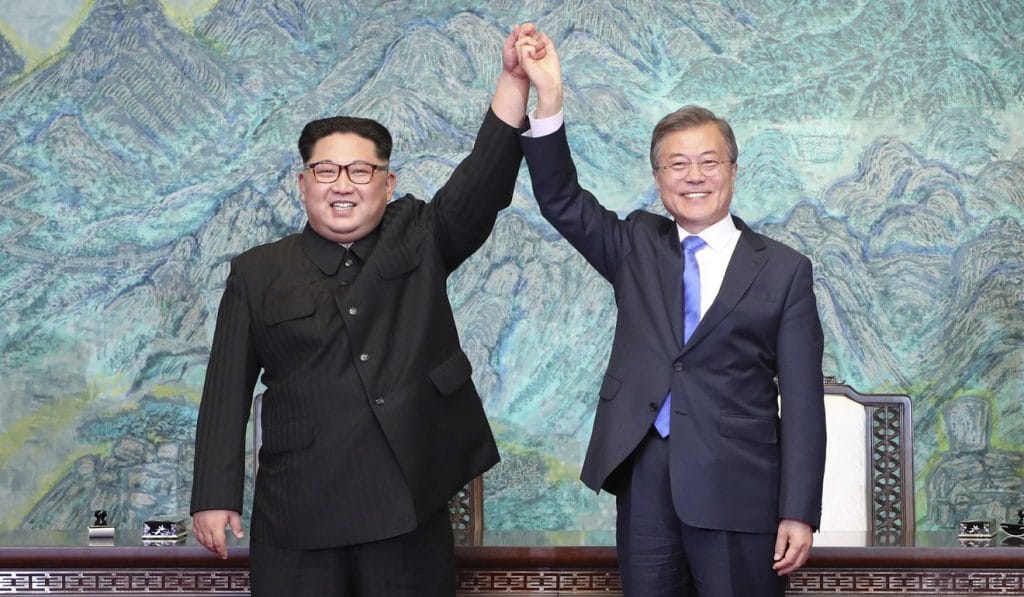 2018 April 27: Moon – Kim summit at DMZ. This summit between Moon Jae-in, President of South Korea and Kim Jong-un, the Chairman of North Korea showed North Korea’s wish of ending the Korean War and the establishment of peace on the peninsula and sustained economic cooperation.
2018 April 27: Moon – Kim summit at DMZ. This summit between Moon Jae-in, President of South Korea and Kim Jong-un, the Chairman of North Korea showed North Korea’s wish of ending the Korean War and the establishment of peace on the peninsula and sustained economic cooperation.
2018 June 12: Kim-Trump summit, Singapore:
This summit between Chairman, Kim Jong-un of North Korea and Donald Trump, President of the U.S. was of historical importance.
The summit did not produce any concrete results, but it indicated the possibilities of Washington-Pyongyang direct peace dialogue.
I may add that this summit was possible owing to the inspiring diplomacy of Moon Jae-in, President of South Korea.
2018 September 6: Kim-Moon Summit in Pyongyang. The outcome of this summit may be summarized in terms of demilitarization of hot regions in the east coast lines and the west coast lines on the one hand and, on the other, the mutual wish for the reunification of two Koreas.
2019 February 27-28: Kim-Trump summit in Hanoi. Chairman, Kim Jung-un made a 6-day train trip by train to meet with Trump.
The hope was high. Both Presidents, Donald Trump and Chairman, Kim Jong-un seemed eager to solve the nuclear crisis. The two leaders were supposed to simply sign the agreement prepared before hand by advisors.
Donald Trump and Kim Jong Un shake hands at the Hanoi Summit in Vietnam, February 27, 2019. Photo credit: White House
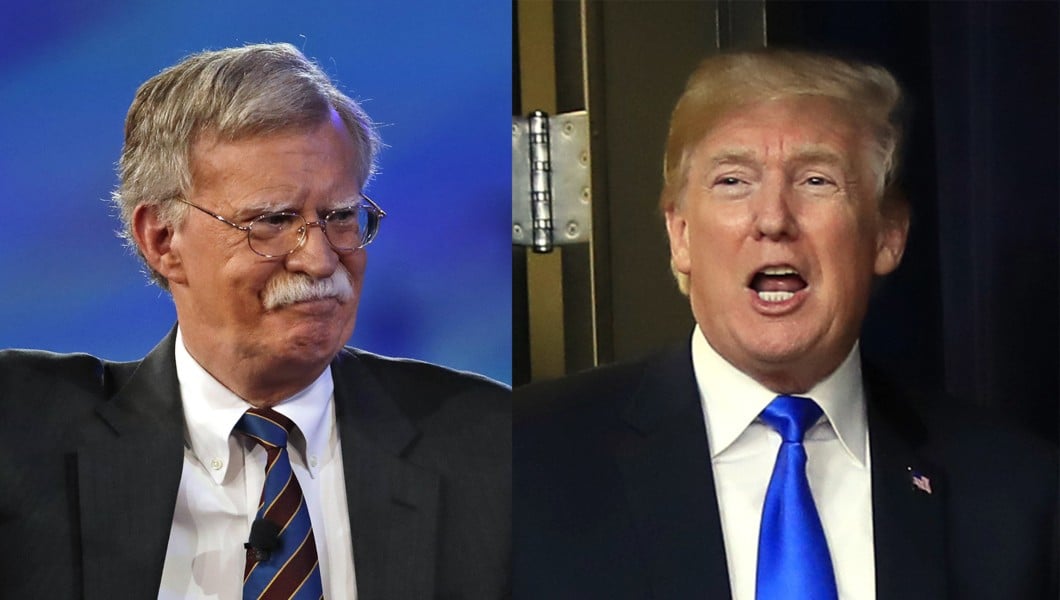 But, at the critical moment, John Bolton, the champion of for the Complete, Verifiable and Irreversible Denuclearization (CVID) gave a small piece of paper which made Trump leave the conference room. The world wonders about the contents of the piece of paper.
But, at the critical moment, John Bolton, the champion of for the Complete, Verifiable and Irreversible Denuclearization (CVID) gave a small piece of paper which made Trump leave the conference room. The world wonders about the contents of the piece of paper.
It is likely that it contained some sort of threat forcing Trump to abandon the peace-process with North Korea.
 2019 June 30: Kim-Trump summit in DMZ South Korea. It was said that they would resume the peace process, if and when time comes for it.
2019 June 30: Kim-Trump summit in DMZ South Korea. It was said that they would resume the peace process, if and when time comes for it.
2023 April 13: launching of ICBM Hwasong-18 which can reach 15,000 km.
This took place 13 days before the Yoon-Biden summit to warn against Washington-Seoul military alliance. North Korea can be a real threat to the U.S, if the Pentagon or Seoul or Japan attack North Korea.
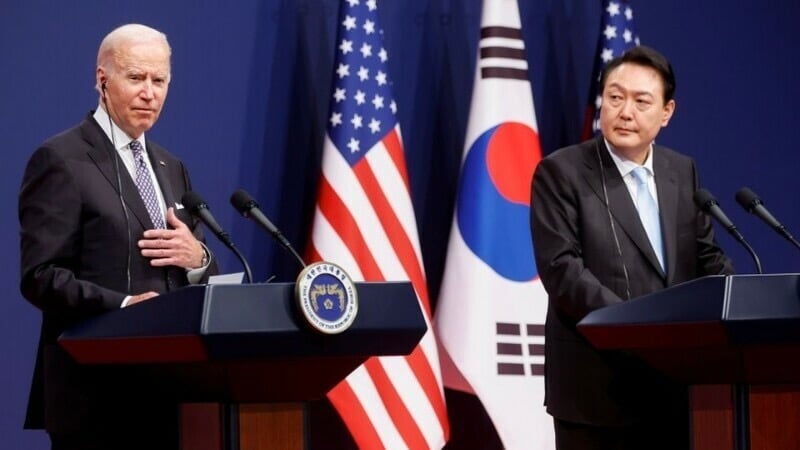 2023 April 26: Yoon-Biden summit in Washington. In this summit, South Korean President, Yoon Suk-yeol would have asked Joe Biden, President of the U.S. to protect Yoon’s government and the pro-Japan conservatives in South Korea from North Korean nuclear attack in exchange with the deployment of South Korean armed forces to China-Taiwan War.
2023 April 26: Yoon-Biden summit in Washington. In this summit, South Korean President, Yoon Suk-yeol would have asked Joe Biden, President of the U.S. to protect Yoon’s government and the pro-Japan conservatives in South Korea from North Korean nuclear attack in exchange with the deployment of South Korean armed forces to China-Taiwan War.
Biden promised two things. On the one hand, Washington would deploy, if needed, American war assets including nuclear submarines at the cost of South Korea. On the other hand, South Korea would be a part of a nuclear consultative committee.
As a result, the Yoon-Biden summit has intensified the nuclear crisis of North Korea
2023 July 18: Proposal of Summit with no conditions. Biden’s Security Advisor, Jake Sullivan proposed DPRK-U.S. bilateral talks without preconditions.
He surely knows that North Korea is not naïve enough to fall again into the trap of Washington’s “without condition” proposal. Then, why did he make such empty proposal?
If Pyongyang refuses, then Washington’s favourite rhetoric comes in and tells the world that North Korea refuses the peace dialogue.
But, as far as North Korea is concerned, this is an empty gesture with no meaning. It is hard to see how talks without conditions can achieve anything.
Kim Yo-Jong, key member of the State Affairs Commission (SAC) replies with dismay and even with anger,
“It is a day dream for the U.S. to think that it can stop the advance of the DPRK and, furthermore, achieve irreversible disarmament by reversible by such incentives as sanctions relief, suppression of Pentagon’s joint military exercises with South Korea and a halt to deployment of strategic weapons in the region.” (Rt report quoted in 21cir Century, July 18, 2023)
The evolution of the North Korean nuclear crisis may be summed up this way.
The DPRK planned nuclear development for 37 years (1953-1991) under the leadership of late President Kim Il -sung;
North Korea has experienced the vicious circles of denuclearization for 23 years, (1993-2016) under the government of late Supreme leader Kin Jong-il who really wanted to denuclearize his country.
In 2002, he was reported to have told the Japanese Prime Minister, Junichiro Koizumi who visited Pyongyang that North Korea was so eager to get rid of nuclear development program and that North Korea had to have nuclear weapons only to defend his country.
And, since 2017, under the chairmanship of Kim Jong-un, North Korea has been ready to meet any external threat with its nuclear weapons as a full-fledged nuclear state.
3. Which Country Is Responsible for the North Korean Nuclear Crisis?
To find the country responsible for the nuclear crisis in North Korea, we have to find the country which has done two things.
First, we have to find the country which has forced North Korea to undertake the development of nuclear protection. As we saw above, it was the United States which forced North Korea to feel obliged to develop nuclear arsenal.
Second, we have to find the country which has been responsible for the continuation of the North Korean nuclear crisis. As we saw above, it has been Washington which has prevented North Korea from abandoning nuclear development
So, to sum up, the responsible of the nuclear crisis is Washington, because it forces North Korea to go for nuclear defence on the one hand, and on the other, it allowed the crisis to perpetuate.
But, why did Washington behave the way it behaved? Now we turn to this question:
4. What Are the Real Objectives of America’s Policy on the North Korean Nuclear Crisis?
It appears that the North Korean nuclear crisis serves two policy objectives of Washington, namely weapon sales and the regime destruction.
The nuclear crisis of North Korea creates North-South tension and it allows the Pentagon to justify bigger defence budget and higher profit for the American war industry.
Moreover, the nuclear crisis provides excuse to Washington to qualify the Juche regime as “dangerous regime” deserving to be changed, or rather, to be destroyed.
In this way, the nuclear crisis serves the double purpose of making money and destroying a regime which is unacceptable to the West led by the U.S.
The destruction of the North Korean regime is a common wish of pro-Japan conservative South Korea, Japan and the U.S. for different reasons.
For the pro-Japan conservative South Korea (PJCSK), the survival of the Juche regime leading to the peaceful unification of Korea means that the PJCSK people becomes shrinking minority leading to the loss of power and wealth.
For Japan, the survival of the Juche regime leading to peaceful unification of the Korean peninsula means increasing economic, political, trade and even military threat.
Now, we may also examine why Washington is so eager to destroy North Korean regime. As far as Washington is concerned, North Korea’s regime is bad and it can pollute good regimes.
In short, all these three countries wish the destruction of the Juche regime. There are two ways of doing it, namely, by force or by internal turmoil. But the regime destruction by force is costly, at least for now.
So, the best way of destroying the North Korea regime is the maintenance of nuclear crisis which will harm the economy and increase North Korean people’s suffering thus leading to internal revolt. Therefore, the nuclear crisis should be allowed to continue.
The nuclear crisis combined with economic sanctions will destroy the Juche regime.
Moreover, as mentioned above, the nuclear crisis is the good source of profit for the American war industry. South Korea buys each year American weapons amounting to USD 10 billion to USD 20 billion. Japan buys much more. The Philippines buys American military wonders along with other East Asian countries.
But, despite the pressure coming from nuclear weapons programs and economic sanction, there is no sight of North Korean people’s uprising; the Juche regime is solid.
Here, the Washington has underestimated the Juche regime which makes North Koreans to be loyal and devote themselves to their country and to their leaders.
The North Korean life philosophy is the combination of Taoism (pragmatism), Buddhism (freedom from secular desires) and Confucianism (hierarchical social order). These traditional values make North Korean people to be practical, to be ready to endure hardship and to give greater priority to common goods than to private interests.
The Juche doctrine (or religion) is, in a way, an integration of these Asian values into “the belief of trinity.”
The Juche doctrine begins with the notion that man is free and master of himself. Now, the individuals identify themselves, out of free will, with .the nation. Moreover, the individuals identify themselves with the leader.
The individuals are the center of the nation. Moreover, the individuals, the nation and the leader are “one” and “the same.”
What the leader is doing and thinking is what the individual and the nation are doing and thinking.
What the individual is doing and thinking is what the leader and the nation are doing and thinking.
What the nation is doing and thinking is what the leader and the individual are doing and thinking.
In this doctrine, when individual is revolting against the leader, the individual is revolting against himself.
In this doctrine, the individual is in the leader; the leader is in the individual.
That is why North Koreans do not revolt against the leader.
The Juche doctrine was the idea of late president, Kim Il-sung but refined by his son, late Kim Jong-il, who was quite a thinker. But, it took decades of education before the doctrine has become North Koreans’ way of living and thinking.
If there were no popular protests against the government despite nuclear threat, despite economic hardship largely due to sanctions and despite years of famine, it was the results the Juche doctrine.
The Juche doctrine was something which the Washington did not understand or did not want to understand.
Thus, Washington’s anti-North Korea policy failed as far as the regime destruction is concerned. However, it succeeded in weapon sales and making huge profit for the American Pro-War Community (AMPC).
5. What Will Happen to the North Korean Nuclear Crisis?
We can think of the following scenarios in connection with the future of the North Korean nuclear crisis.
First Scenario: the nuclear crisis will continue as long as the North Korea is not a real threat, because the nuclear crisis brings money and weaken further the North Korean economy. North Korea has never been a real threat and it will remain so, unless provoked.
Second Scenario, North Korea undertakes moratorium on nuclear development and allows the opening of its huge reserve of rare earth to the U.S. and Japan in exchange of sanction lifting and even normalization of Washington-Pyongyang relations.
The amount of rare earth reserve of 7 countries which are in the American camp (Vietnam, India, Brazil, U.S., Australia, Greenland and Canada) is 40 million MT s against 65 million MT for combined reserve of Russia and China.
The world reserve is 130 million MT. But, imagine, North Korea has 216 million MT. Remember this. The issue of the future world war depends much on the access to semiconductors, which cannot be produced without rare earths.
The combination on the moratorium on nuclear development with the access of the American war camp to North Korean rare earths may persuade Washington to terminate the nuclear crisis.
The third scenario is troublesome. If the U.S.-DPRK confrontation continues, if the trilateral (ROK-Japan-U.S.) military alliance becomes a reality and if the alliance threatens Chairman, KIm Jong-un, North Korea might join the war camp of China-Russia.
This possibility was shown in a dramatic way by the participation of Russia’s Defence Minister, Sergey Shoigu at the Pyongyang military Parade of July 27 organized to commemorate the 70th anniversary of the Armistice of the Korean War.
When this happens, there will be no more nuclear crisis in North Korea, but, the third world war will come sooner that we might have thought.
The fourth scenario is a situation where North Korea becomes an ally of Washington in exchange with relations normalization, economic aid, invitation to Washington-led international organizations. If this happens, the West’s striking power will increase so that the probability of the 3rd world war will increase.
What are the probabilities of realization of theses four scenarios? Here is my evaluation.
Scenario 1: 80%: this scenario is the most probable, but at the same time the most undesirable.
Scenario 2: 40%: This scenario is highly desirable, but it needs special efforts by Washington.
Scenario 3: 70%: This scenario is the worst scenario because it increases the probability of the global nuclear war.
Scenario 4: 10%: This scenario is unlikely, but if it happens, it may hasten the step of the global nuclear war, because the combination of the mighty armed forces of ROK and those of DPRK may strengthen the American temptation to hit China.
Conclusion
I may conclude this paper this way.
First, Washington is responsible for initiating and perpetuating the North Korean nuclear.
Second, Washington has failed to change (destroy) the Juche regime due to its lack of will or insufficient capacity to understand the Juche doctrine.
Third, nonetheless, the American pro-war community (APWC) made a fortune through weapons sales to pro-U.S. East Asian countries who would have accepted North Korea as regional security threat
Fourth, of the 4 scenarios examined, the first scenario of perpetuation of the nuclear crisis is the most probable, because it the most lucrative.
*
Note to readers: Please click the share button above. Follow us on Instagram and Twitter and subscribe to our Telegram Channel. Feel free to repost and share widely Global Research articles.
Dr. Joseph H. Chung is professor of economics at the Quebec University in Montreal (UQAM) and member of Research Centre on Integration and globalization (CEIM-UQAM). He is a Research Associate of the Centre for Research on Globalization (CRG).


